A Dictionary Of Practical Materia Medica (Vols.I, Ii, Iii)
| Author: |
John Henry Clarke |
| ISBN: | 9788131902615 |
| Imprint: | B.Jain Large Print |
A pulling together of Allen’s Encyclopedia, Hering’s Guiding Symptoms, and Hale’s Remedies. The clinical uses of the remedies are discussed, cases are given as examples of use, and then the remedy symptoms are listed using the Hahnemann schema.
| Pages | 952 |
|---|---|
| Format | Hard Cover |
| Imprint | B.Jain Large Print |
| Language | English |
Add a Review
Your email address will not be published. Required fields are marked *
John Henry Clarke
Dr. J. Henry Allen (1854 1925) was President of the International Hahnemannian Association in 1900 and was Professor of Skin and Venereal Diseases at the Hering Medical College in Chicago. He is the author of two books The Chronic Miasms and this, "Diseases and Homoeopathy Therapeutics of the Skin". Both are regarded as classics of Homeopathic literature.Dr. Clarke was one of the most eminent homoeopaths of England. He had his famous Clinic at 8 Bolton Street, Piccadilly, located in... Read More
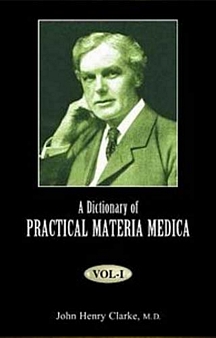
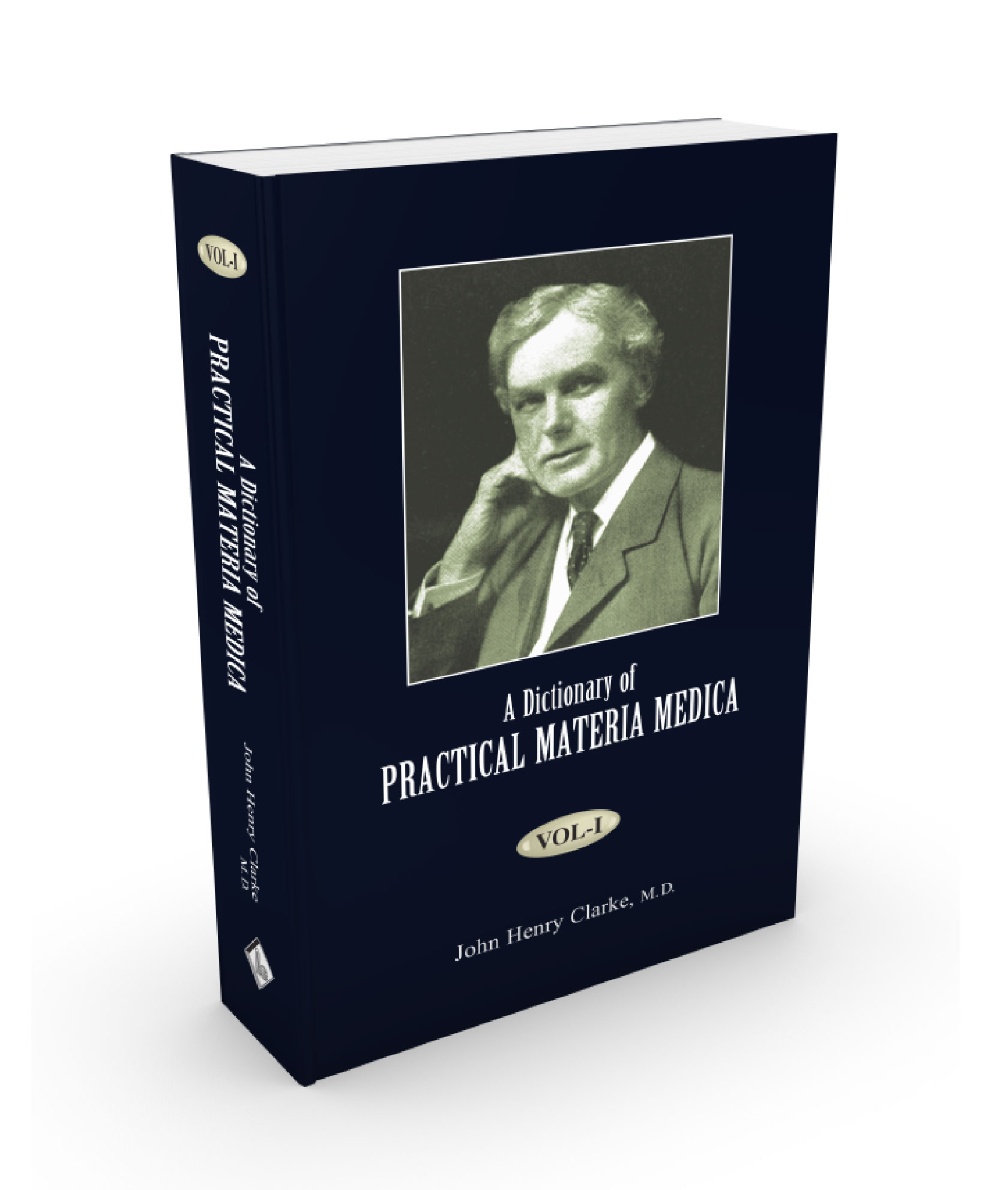

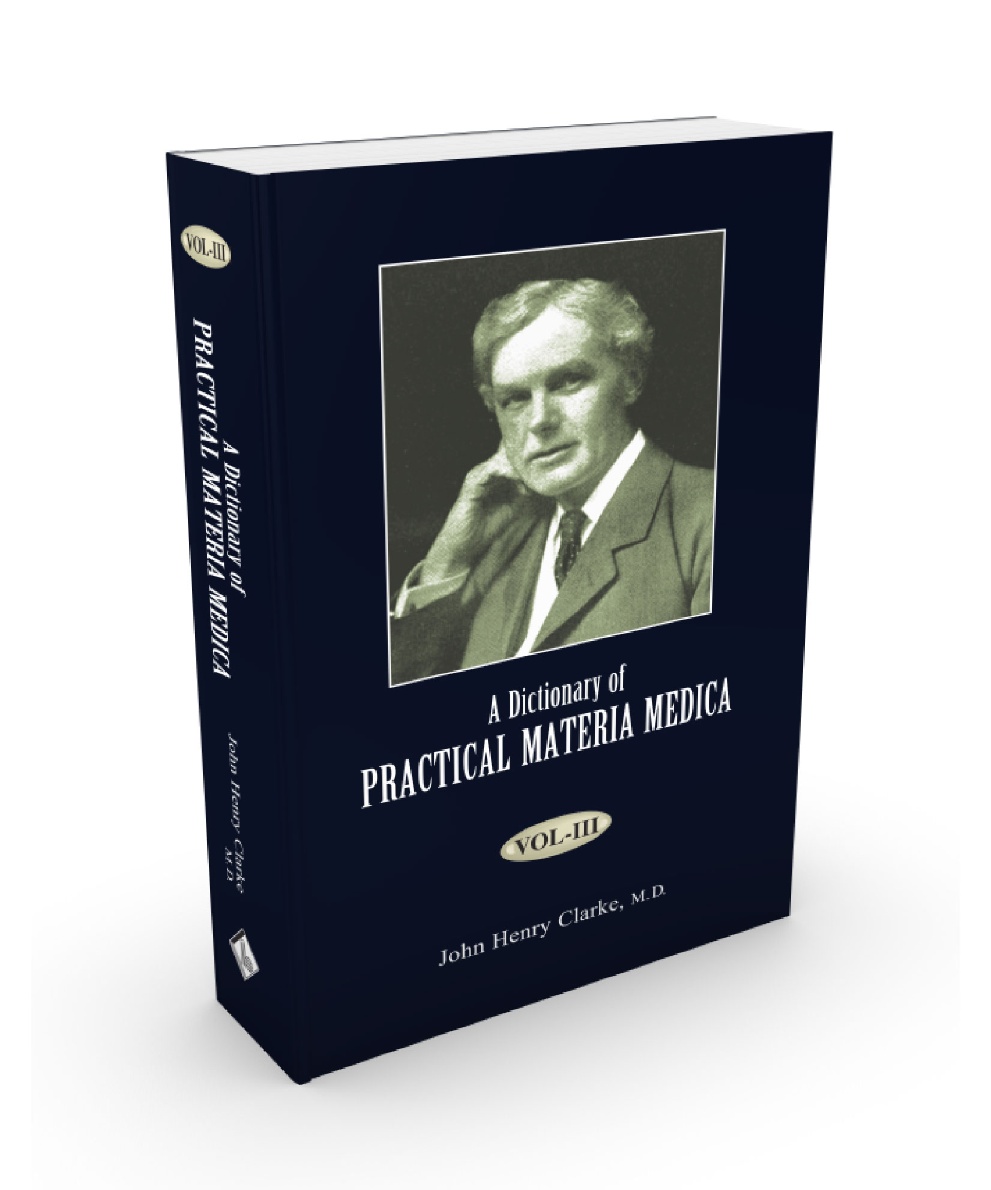
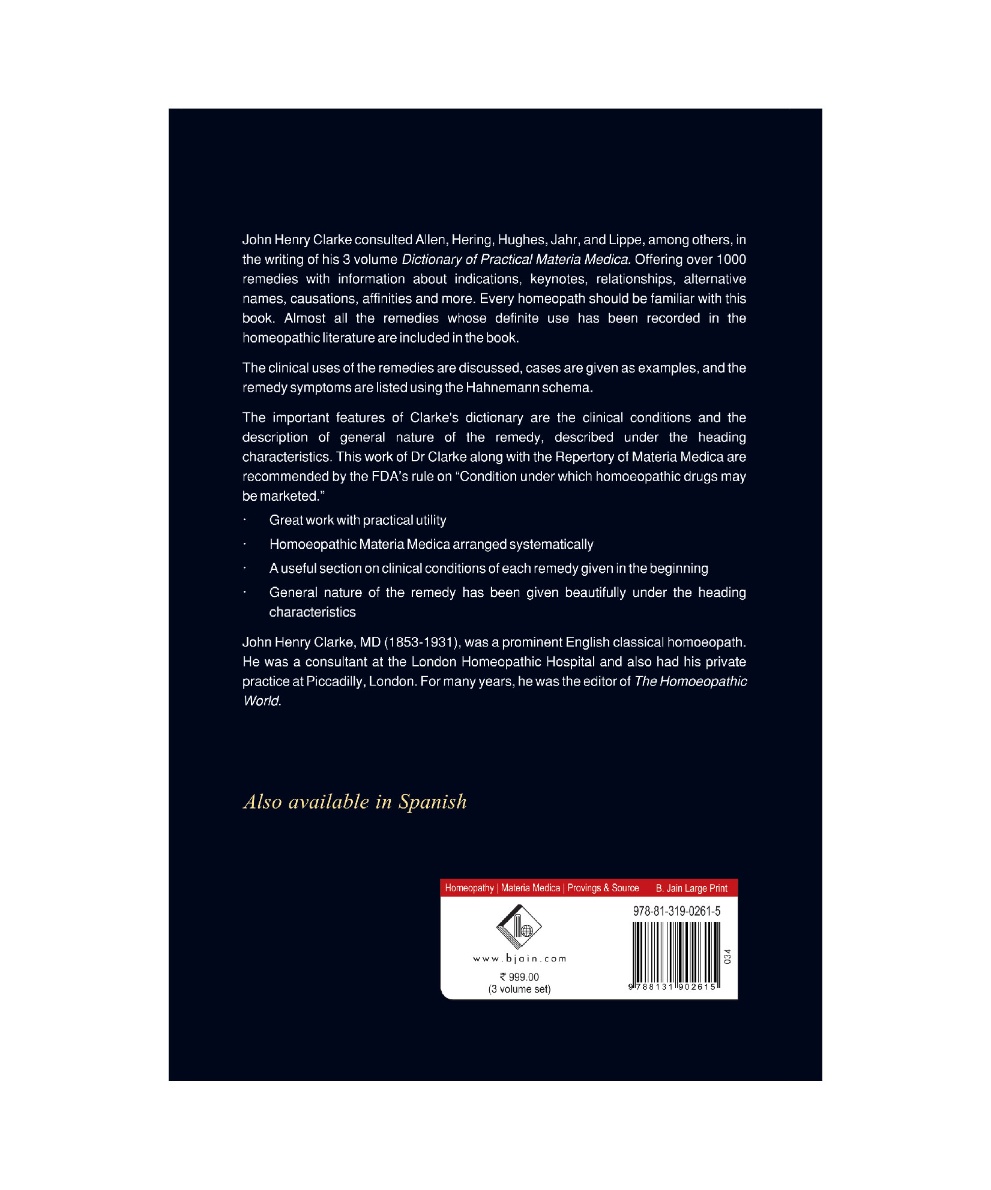
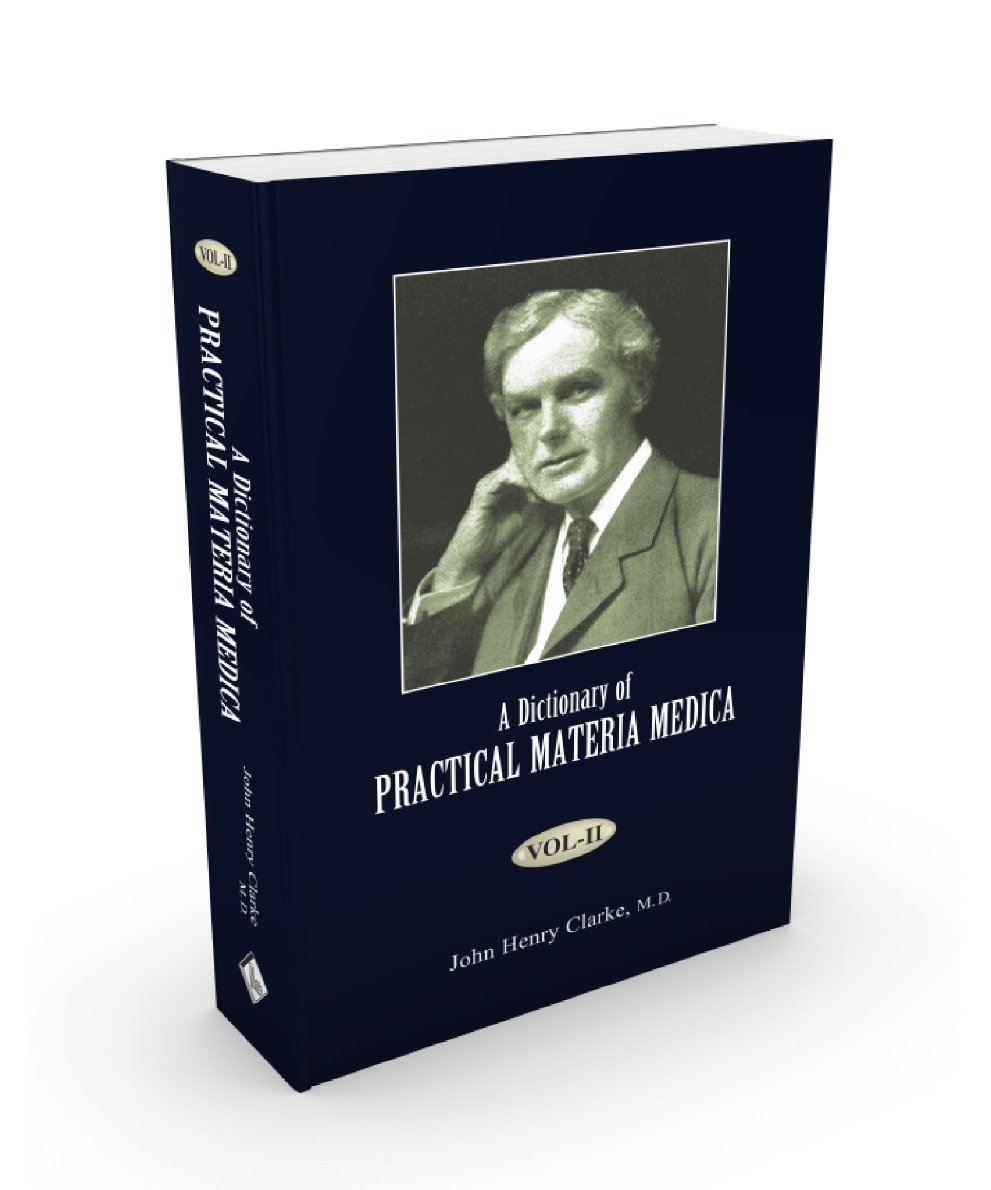
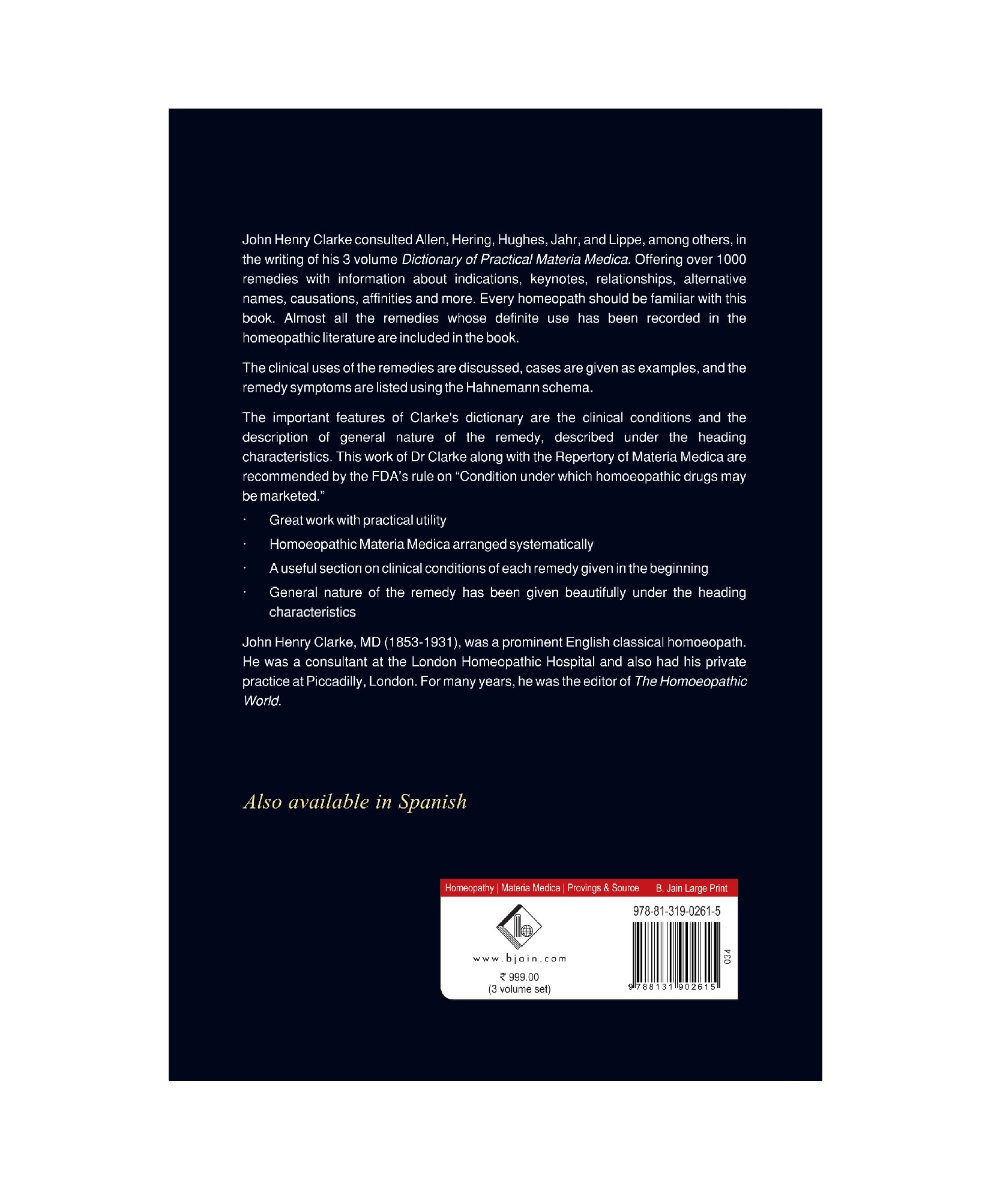

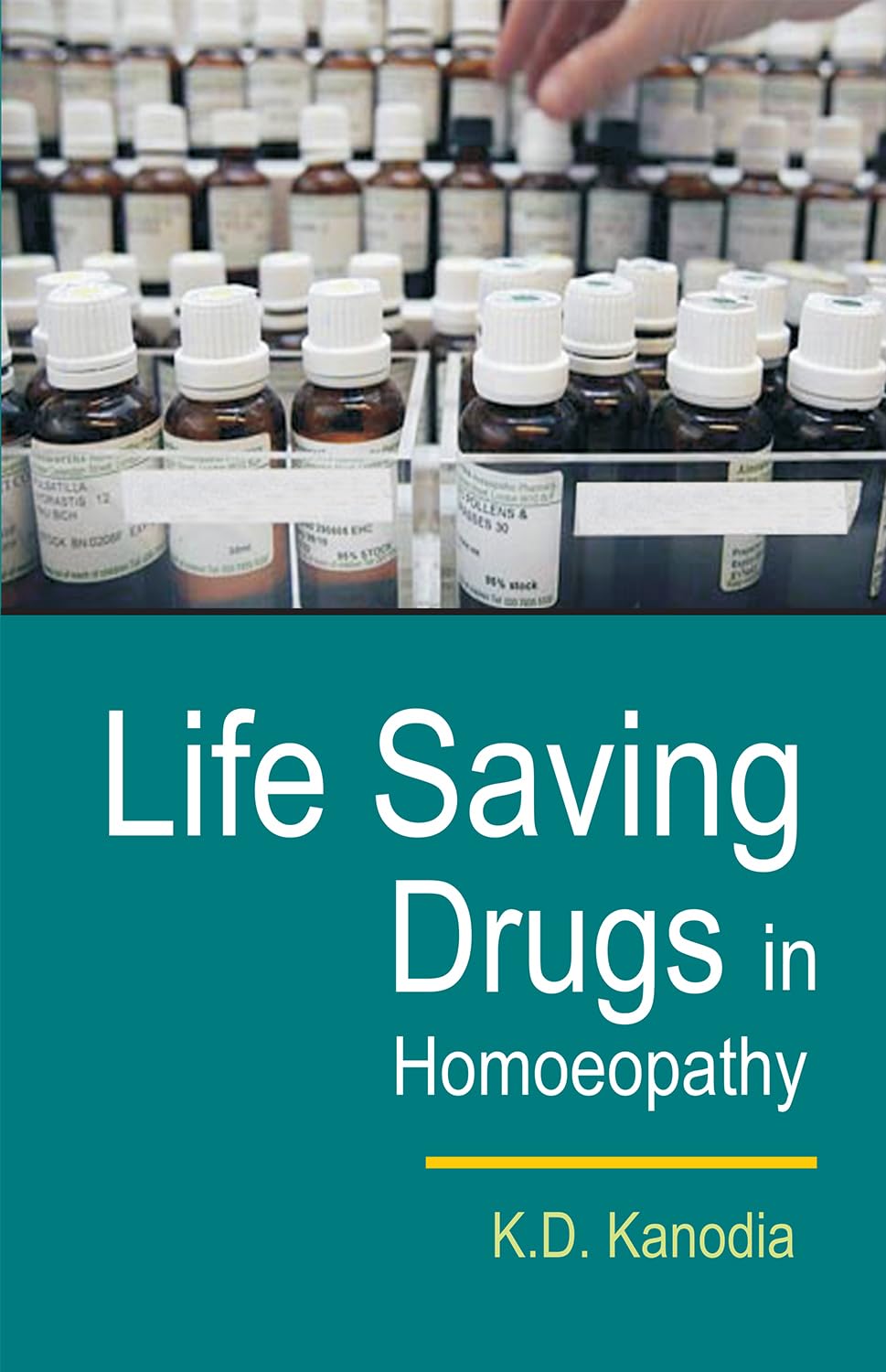
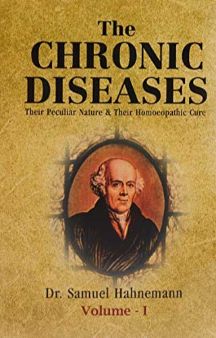


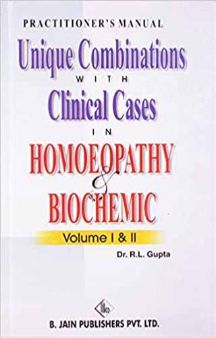
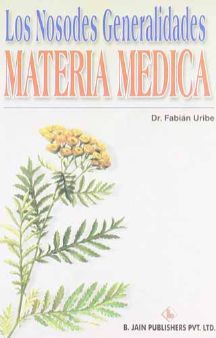


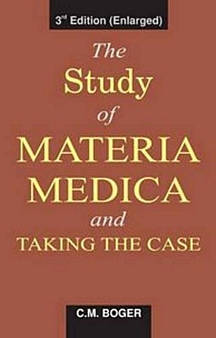
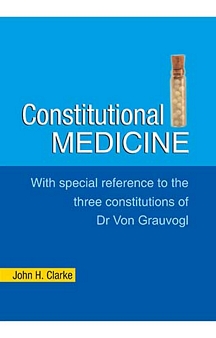
Ashajad V Ansari
Valuable book for homoeopathic learners.
pallavi Srivastava
These books are must for every homeopath n student.. quality n print acceptable..
Anuja Unnikrishnan
this is a wonderful read and can be bought without any hesitation.
Dr. Ankur Shukla
“We must never lose sight of the fact that Homoeopathy is Materia Medica and nothing whatever else. All other branches of medical study are Homoeopathy’s handmaidens buy, take away Hahnemann’s Materia Medica and Homoeopathy vanishes from the scene. So that in so far as we are homoeopathist, Materia Medica is our sole concern.” In this era of advanced technology where computer-based repertories have taken over majority of the students mind, the age-long importance of knowledge of Materia Medica as a pre-requisite for Homoeopathy can be shown by the above statement of Dr. Clarke. And as Dr. Clarke understood the importance of the study of this subject that is why he also realized how can this study be made more and more interesting and what were the present lacunas which must be filled to make this study if not perfect than more enjoyable and profitable for a homoeopathic student. When this idea of forming a Materia Medica was conceived by Dr. Clarke, his original plan was to make a book which will act as a companion to his book, The Prescriber, but as materials were accumulated the scope of the work increased beyond his original idea. And he was not in favor of producing another condensed Materia Medica as he felt there were many that filled that category. He formed a new plan of making a Materia Medica which will include all the remedies of which definite use has been recorded in the homoeopathic literature. And therefore, we have presently three volumes of this marvelous work. Some of the students often say that there are too many remedies to be studied from this book to that Dr. Clarke himself mentions explaining the title of his book – “If some are inclined to object that I have inserted too many, I reply that my work is a Dictionary, and I have never yet found a dictionary with too many words.” And if you break down the title further there is the word “Practical”, which also signifies the beauty of this work, as Dr. Clarke says “My object in the Dictionary has been to so present the picture of each remedy that it may be at once recognized and distinguished from any other by those who consult its pages. In doing so I have considered first those point which seems to me have a practical bearing; points which have seemed of academic interest only I have left in the main to other works.” And with this work the students will not only find the practical tips of Dr. Clarke but their knowledge will also be enhanced by the important point given by various authorities in Homoeopathy, mainly including Dr. Compton Burnett, Dr. Robert T. Cooper, and Dr. Thomas Skinner popularly known as The Cooper Club, they all dined together for dinner and discussed various cases and indication used by them and Dr. Clarke wrote down everything said by them and verified these in his clinical practice. This book is filled with such quotations. Content of the Book – Dr. Clarke starts with the Name of each medicine and with that he mentions various synonyms that have also been used and preparation of it. Then he mentions the heading Clinical in which he gives an alphabetical list of diseases in relation to which the remedy has manifested or seems likely to manifest some curative power. And he warns the reader also by saying that “It is not to be regarded as inclusive or exclusive but rather as suggestive.” There is one more peculiarity in this section, the various diseases mentioned in italics are not because they bear some special significance, but because under that heading the drug will be found mentioned in The Prescriber. Then the main text must be divided into two main sections – 1. The Introductory Section (Characteristics, Relations, & Causation) 2. The Schema (Arranged in 27 Numbered Headings) The combination of these two is one of the main objects of this work. Reading the schema alone can be a monotonous task but when assisted by the introductory sections it makes the schema more comprehensible and interesting. And in conclusion to this I would like to raise a question which is frequently raised by every homoeopathic student. Materia Medica is so vast, how can we use it for practical utility? To this Dr. Clarke answers “Complaints are not unfrequently made that the homoeopathic Materia Medica is too vast for practical utility; that the schematised lists of symptoms are unprofitable, if not impossible reading. I do not think so. Indeed, I think that the test of a genuine Homoeopath might not unfairly be said to lie in his capacity to read through a Schema with both profit and enjoyment because of the possibilities it reveals of dealing with cases occurring every day in practice.” With these words I hope you will start with the study of Materia Medica, the Raison d'être (Reason for being) of Homoeopaths.